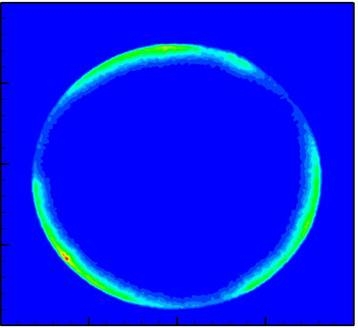Rapid Ready Roundup: Objet is Big in Japan, Fraunhofer Institute, Festo’s ExoHand and ParaNorman

ParaNorman poster. Courtesy of LAIKA.
Latest News
May 18, 2012
In the course of my diligent efforts to keep you good people up to date on the state of additive manufacturing, I come across many interesting news items. I’ll gather them up once every few weeks and present them in a Rapid Ready Roundup (like this one). You can find the last Roundup here.
We’ll start this Roundup with news about Objet expanding its market into Japan. The company has established Objet Japan KK with the assistance of Fasotec Co. Ltd, Objet’s distributor for the region. This move is meant to offer local support for Japanese business relations.
“Japan is a very special market in which innovative technology, advanced applications and new materials are in high demand,” said Gilad Yron, managing director of Objet AP. “Objet has invested significantly in R&D responding to these demands and we feel that the establishment of local presence will put us in a better position to offer the most appropriate solutions and support suited to the Japanese market.”
Next up, the Fraunhofer Institute for Laser Technology ILT has developed a method which allows for quality testing of nozzles used in laser sintering. While in use, the nozzle used to deliver powdered material into the melt can become worn, resulting in inaccuracies in the powder deposition.
The process developed by Fraunhofer uses a laser beam to illuminate the powder gas flow and a high-speed camera to capture photos of exactly where the stream is going.
From the press release:
Thanks to the camera’s high frame rate, it is possible to precisely determine the number and position of individual powder particles at a defined point in time. Based on similar principles to laser caustic measurement, the lateral laser beam moves down the powder gas stream layer by layer, requiring just a few seconds to capture the data for each layer. The system then calculates the particle density distribution for each layer from the several thousand individual images captured by the camera. Finally, the individual layer images are superimposed on each other to yield the overall spatial particle density distribution.
Moving from quality testing to end-use, Festo has created what it calls the ExoHand using 3D scanning and 3D printing. The ExoHand is a robotic glove that enhances the user’s strength. Each ExoHand is tailored to its user by making a 3D scan of the hand. Parts are created using selective laser sintering. This is the sort of customization that would be massively more expensive using subtractive manufacturing methods.
Finally, Rapid Ready takes you to the movies. Even if you have no interest in ParaNorman, you might have kids that make your interest irrelevant. As a nerd, I find the idea for the movie amusing, but if you aren’t much of a zombie fan, you can watch and maybe take some pleasure in the knowledge that 3D printing is responsible for a fair chunk of what you’re seeing.
Using four ZPrinter 650 systems, the creators made more than 31,000 different facial parts, which amounts to about 8,000 different faces and 1.5 million possible expressions. That’s a 1.49 million facial expression improvement over a certain actress in a certain vampire movie series. Other films to use 3D printing include Coraline and Iron Man.
Below you’ll find a video demonstrating Festo’s ExoHand.
Sources: Objet, Fraunhofer Institute, Design News, Collider
Subscribe to our FREE magazine, FREE email newsletters or both!
Latest News
About the Author
John NewmanJohn Newman is a Digital Engineering contributor who focuses on 3D printing. Contact him via [email protected] and read his posts on Rapid Ready Technology.
Follow DE







